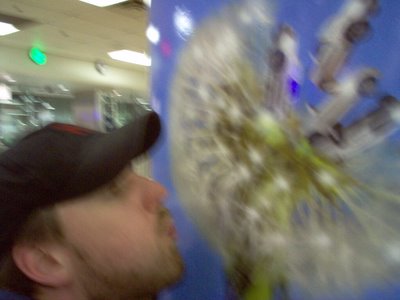Americans used Yellow Pages to look up 16.3 billion references during 2005--up from 16.1 billion in 2004, according to an advance look at the national results of the annual study conducted for the Yellow Pages Association by Knowledge Networks/Statistical Research Inc. While that's a healthy gain, the number of times American consumers referred to printed Yellow Pages actually declined to 14.5 billion in 2005, down from 14.6 billion in 2004.
That's the bad news, Neg Norton, president of the YPA acknowledges--but the good news is that online directories are making up the slack--growing to 1.8 billion references in 2005, up from 1.1 billion in 2002, the first year that KN/SRI began tracking online directories. That's good news, says Norton, because some cynics might have expected usage of print directories to erode even faster.
"Overall, they're flat," he says, adding that the two Yellow Pages platforms are actually complementing rather than cannibalizing each other. Among other things, the data reveals that different consumers utilize print and online directories differently and at different times. The findings reveal that online Yellow Pages usage is greater in so-called A counties where broadband access may be more plentiful, whereas the print directories' index is higher in B and C counties. The report also offers ample data showing the demographic skew of online vs. print directories.
Heavy users of the print Yellow Pages, for example, tend to be 25- to-49-year-olds, who are college-educated, reside in upper-income households, have large families, travel frequently, and have recently moved. The profile for Internet Yellow Pages users skews to more toward the 18- to-49-year-old crowd.
But the most surprising finding in the new report is the attitude Yellow Pages users have toward advertising. Unlike most media where advertising is deemed "clutter," most Yellow Pages consumers consider it "content." In fact, 18 percent of the 9,078 consumers surveyed by KN/SRI said they wanted more ads in their Yellow Pages directories.
"Most media are sellers looking for buyers," Norton quips, adding that Yellow Pages users are "buyers looking for sellers."
And according to the new report, they are mostly in the market to buy something to eat. "Restaurants" was the No. 1 Yellow Pages heading in both print and online directories during 2005. Beyond that, print and online have little in common in terms of the categories consumers use Yellow Pages to search for. "Physicians & Surgeons" ranked No. 2 in print, while "Hotels" ranked second online.
Despite the obvious relevance of Yellow Pages to many major product categories, the medium has had a difficult time attracting major brand advertisers in most big consumer categories, largely because they see directories as a local medium and don't necessarily believe in its ability to promote brands. In recent years, the industry has tried to convince marketers such as Procter & Gamble to advertise Crest toothpaste under headings for dentists--but except for a few experiments, Yellow Pages are still relegated largely to retail, and local mom-and-pop establishments.
But in what was perhaps one of the most creative uses of the medium ever, Starcom placed ads around the Las Vegas Yellow Pages for client Kellogg's Special K brand. The ad pointed out that the same number of pounds that the directory weighed would be what consumers would lose if they stuck with a Special K diet.
Annual Yellow Pages References
Print Online Total
2005: 14.5 billion 1.8 billion 16.3 billion
2004: 14.6 billion 1.5 billion 16.1 billion
2003: 14.9 billion 1.2 billion 16.1 billion
2002: 15.1 billion 1.1 billion 16.2 billion
2001: 15.1 billion NA 15.1 billion
2000: 14.9 billion NA 14.9 billion
Source: Knowledge Networks/SRI for the Yellow Pages Association.

No comments:
Post a Comment